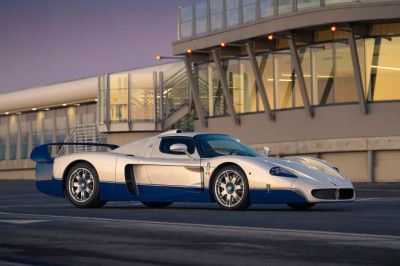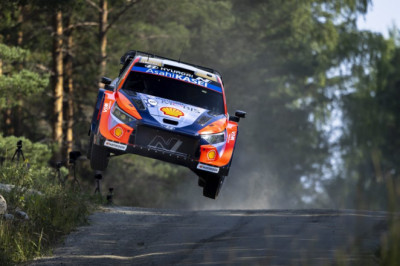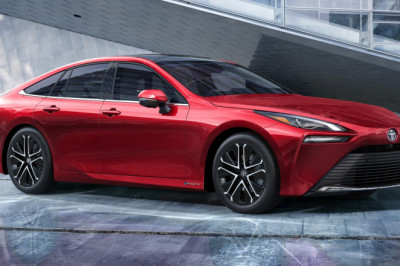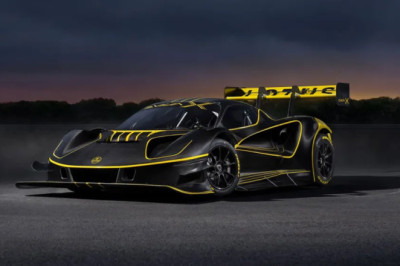
A vehicle that could reach 400 km/h in the morning, yet be a picture of elegance driving to the opera in the evening. This was the dream of the ingenious Ferdinand Karl Piëch, then-Chairman of the Volkswagen Group. A visionary who, in 1997, began the journey of conceptualizing the Bugatti Veyron – a new breed of car, a hypercar, that could realize his ambition. Realizing such capability in a road-going vehicle had not been achieved in the history of the automobile. It was a monumental challenge that demanded a masterstroke of engineering and intelligent design; one that only the finest automotive minds could conquer.
A series of intractable physics problems stood in the way of Piëch, Bugatti’s master engineers, and creating what would become one of the most iconic vehicles of all time. Fundamentally, the marque would need to deliver a car that could withstand the immense forces subjected to it at a third of the speed of sound. That required a wholesale change in vehicle design approach – right down to the tires, none of which in existence could take on the challenge. The tires themselves aptly symbolized the scale of the task at hand – ultimately taking a supplier five years to develop a solution capable of managing the performance of Piëch’s vision.
The starting point for the vehicle, however, was the engineering marvel that would propel the Veyron at previously unimaginable speeds: its W16 engine. Newly developed from scratch, the W16 was designed with an 8.0-liter displacement, reinforced with four turbochargers and ten radiators to provide sufficient cooling. The result was a powerplant that could seamlessly deliver 1,001 PS at 6,000 rpm and 1,250 Nm of torque between 2,200 and 5,000 rpm – unprecedented numbers that required an equally momentous achievement in powertrain and drivetrain engineering to harness effectively. In turn, another first was required – a seven-speed, double-clutch DSG gearbox with lightning-fast yet smooth gearchanges that was specifically designed for the Veyron, and able to cope with its power and torque output.
Arranged longitudinally ahead of the W16 engine, the gearbox – just like the powerplant – was designed as a dry sump unit, playing a pivotal role in allowing Bugatti’s engineers to lower the car’s center of gravity. That decision was part of a critical program to equip the car with strong road-holding capability – a characteristic achieved through the combination of the immense dynamic tolerances of the fully integrated carbon fiber monocoque, aluminum chassis, and all-wheel drive drivetrain,
Employing a transmission unit integrated behind the front axle differential, the cutting-edge all-wheel drive system allows for perfect distribution of power between the front and rear axles, optimizing balance through challenging twists and turns – while a multi-disc transverse lock on the rear differential ensures peak traction coming out of them.
And yet, Ferdinand Piëch’s vision for the Veyron would be unachievable without a highly efficient yet beautiful design capable of working in harmony with the forces of air at high speed. At its core, integrated elegantly into the car’s smooth profile, is an adaptive aerodynamics system tested to perfection by Dr. Wolfgang Schreiber, then the head of development at Bugatti. Managed by a variable control system, the adaptive aerodynamics feature two diffuser flaps positioned ahead of the front wheels, as well as an integrated wing and spoiler at the rear of the car.
Supporting the Veyron’s unique carbon-ceramic, high-performance braking system, the rear aerofoil also utilizes the high wind resistance experienced at speeds over 200 km/h, becoming a formidable ‘air brake’. In ‘Handling’ configuration, the driver activates the system when a specific level of braking pressure is exceeded between 200 and 375 km/h, with the aerofoil shifting itself to an angle of 113 degrees to the direction of travel in just 0.4 seconds. The ingenious solution not only enhances wind resistance during significant braking but also generates 300 kilograms of downforce over the rear, reducing the wheel load displacement experienced during rapid deceleration and maintaining the vehicle’s hallmark stability.
In every sense, reaching 400 km/h is a feat unlocked by the hypercar’s intelligent aerodynamics. Achieving this requires a conscious and deliberate decision by the driver, along with a specific vehicle setup. The Veyron is prepared for this extreme performance through the use of its bespoke ‘Speed Key’ – a secondary key that must be inserted into a cylinder to the left of the driver’s seat before setting off. Turning it, the vehicle hunkers down in a raked stance – its active suspension taking it a mere 65 millimeters above the ground at the front, and 70 millimeters at the back. While simultaneously, the front diffusers remain closed, and the angle of the rear wing arrangement is reduced – all to minimize air resistance.














